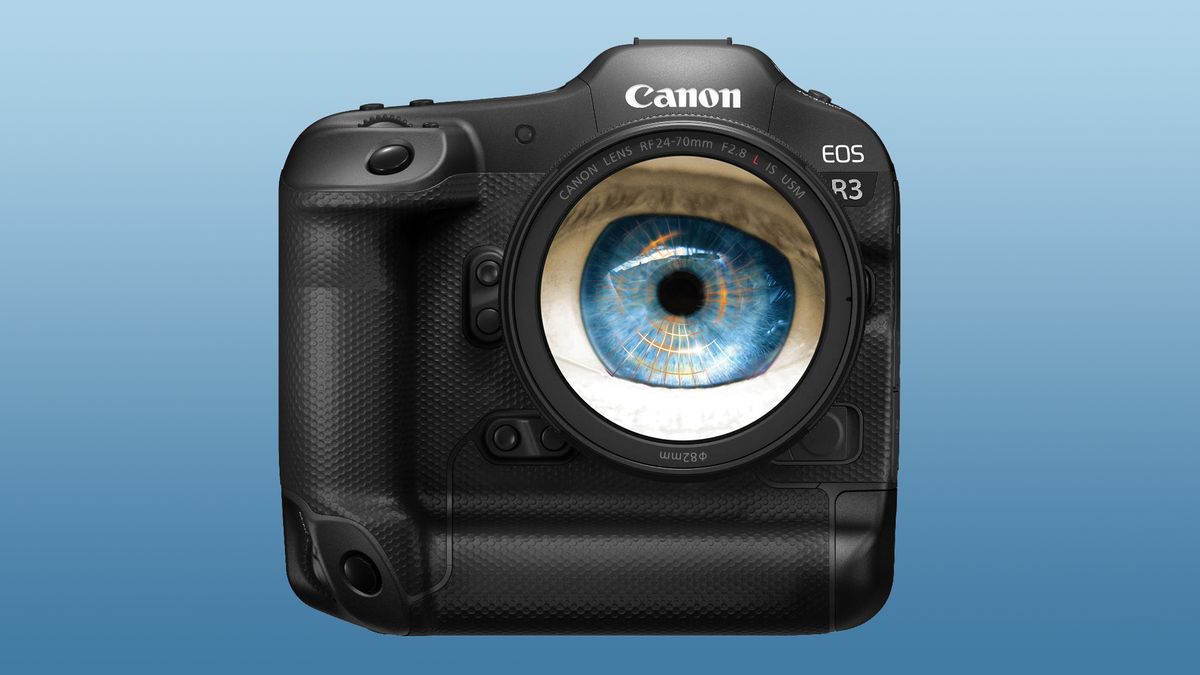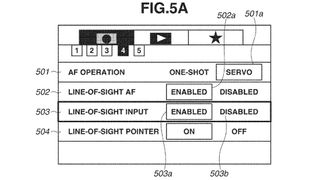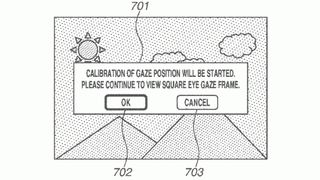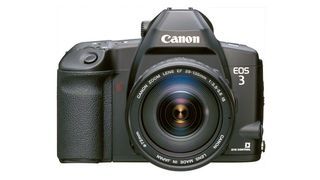New patents bring Canon EOS R3 Eye Control Function AF into focus
The Canon EOS R3 Eye Control Function should see customization and calibration improvements over original tech

UPDATE: New patent information regarding the Canon EOS R3 has shed further light on the company's plans to implement eye-controlled AF point selection in its new flagship model.
The first patent shows a menu system that will likely be similar to what we see in the Canon EOS R3, highlighting numerous customization options. It promises a substantial improvement over the original technology first seen in the 22-year-old Canon EOS-3 film camera and which has never been adopted in any DSLR or mirrorless camera – until now.
The second patent shows how Canon plans to set up calibration for the Eye Control Function on the Canon EOS R3. Canon has likely ironed out the issues with its original Eye Controlled Focus technology, most notably the struggles people with glasses had following a moving target around the viewfinder to calibrate the unit.
According to Canon Rumors there will likely be further patents over the next few months that will explain in greater detail how eye-controlled AF will be implemented in the Canon EOS R3.


ORIGINAL STORY: After a 20-year absence, Canon has dusted off its love-it-or-hate-it Eye Controlled Focus system – a technology that skipped the digital age entirely, as it hasn't been used in any DSLR or mirrorless cameras.
However, it has made a comeback in the new Canon EOS R3 – where it is now known as Eye Control Function, and aims to reduce the speed of focus point selection to keep up with the new camera's blistering 30fps burst rate. So what exactly do we know about Canon's clever tech?
• Read more: Best Canon cameras
Get the Digital Camera World Newsletter
The best camera deals, reviews, product advice, and unmissable photography news, direct to your inbox!
Previously used in Canon's film cameras, the system enables you to move your focus simply by looking at it – the camera detects where your eye is looking and selects the point accordingly.
The last time we saw Eye Controlled Focus was in the Canon EOS-3 – the forebear of the R3, which never made it to the DSLR era (where it would have been called the Canon EOS 3D). The EOS-3 boasted 45 AF points (a dramatic uptick from the 5 AF points of the Canon EOS-5 / A2e and the 7 AF points of the Canon EOS 30 / Elan 7e). It was never made clear why the tech didn't translate to the digital SLR era, though some suggested that the sheer number of AF points was the issue.
Canon first resurrected the technology with a fresh patent back in 2019, in the wake of the original Canon EOS R. That registration, spotted by Canon News, described an infrared LED working in conjunction with an algorithm to perform line-of-sight detection:
"The line-of-sight direction is detected by a predetermined algorithm, which will be described later, from the positional relationship between the eyeball imaged on the eyeball image sensor and the corneal reflection of the light sources".

The technology was again revisited in February 2021, with a fresh patent unearthed by Northlight Images that is the most current info we have on the updated Eye Control Function seen in the EOS R3. Subject detection is now part of the equation, so the aforementioned algorithm might even incorporate Canon's Deep Learning AF seen in the Canon EOS R5, Canon EOS R6 and Canon EOS-1D X Mark III. And it can also recognize the user's iris and store past behaviors, with the process described as follows:
"An image capture apparatus detects a subject in a captured image. The image capture apparatus further recognizes its user based on an eyeball image of the user. The image capture apparatus then selects a main subject area from among the detected subject areas, based on information regarding subjects captured in the past and stored being associated with the recognized user."
Of course, as you might remember if you ever used the old Canon SLRs, the original system was pretty hit-or-miss. It either worked perfectly or it was a complete disaster, depending entirely on the user – and particularly whether they wore glasses, which always seemed to interfere with the system – and this is likely the reason that it didn't make it past the SLR age.
So why is Canon retreading old ground now, two decades on? It's likely that modern detection technology has finally caught up with the original bright idea. The original patent identifies the objective: "To improve user convenience by automating a calibration operation of a gaze position while accurately recognizing a subject in a subject recognition device having a gaze detection function."
Indeed, Canon described the EOS-3's Eye Controlled Focus as being "almost twice as fast and more precise" – and an AF system that moves at the speed of sight is certainly faster than using a joystick or tapping a touchscreen. If indeed the execution has caught up to the excellent idea, then the Canon EOS R3 could be a truly game-changing camera.
Read more:
Canon EOS R5 review
Canon EOS R review
Best Canon camera
Best film cameras

James has 22 years experience as a journalist, serving as editor of Digital Camera World for 6 of them. He started working in the photography industry in 2014, product testing and shooting ad campaigns for Olympus, as well as clients like Aston Martin Racing, Elinchrom and L'Oréal. An Olympus / OM System, Canon and Hasselblad shooter, he has a wealth of knowledge on cameras of all makes – and he loves instant cameras, too.